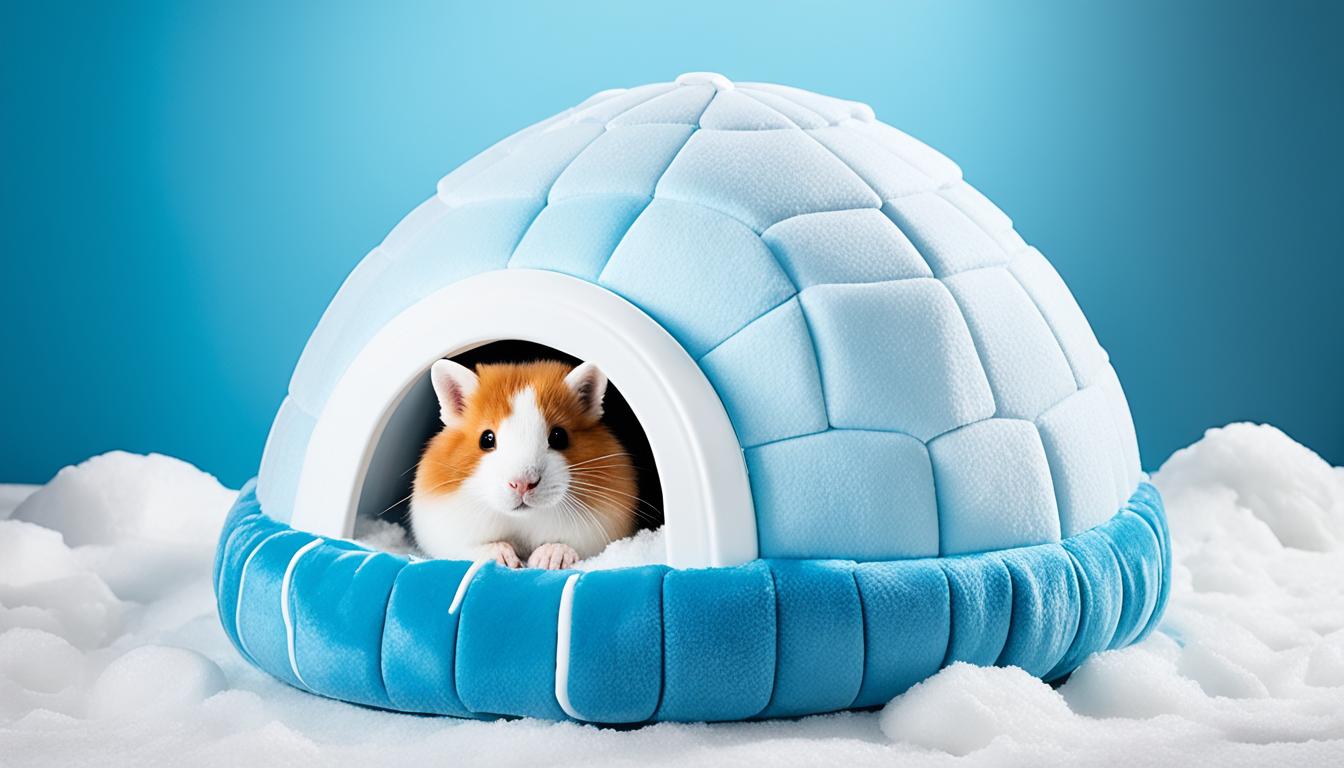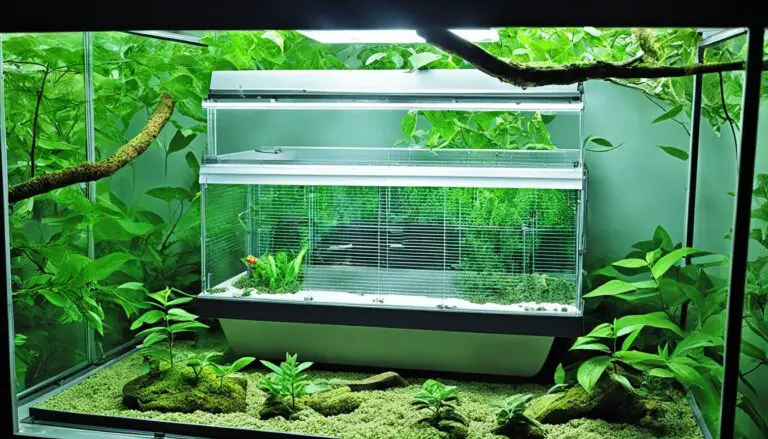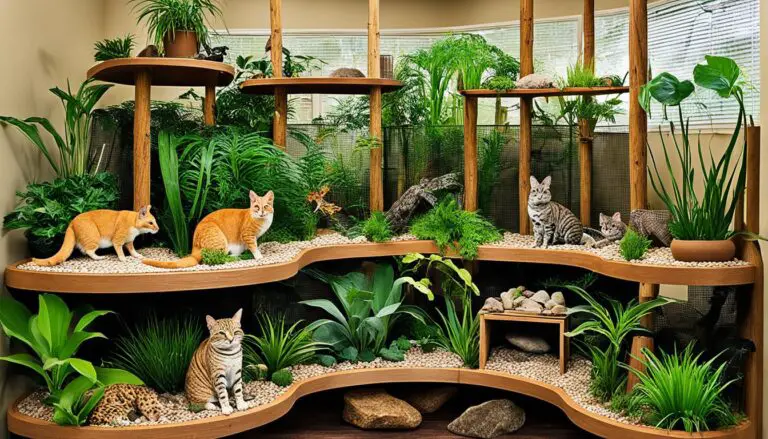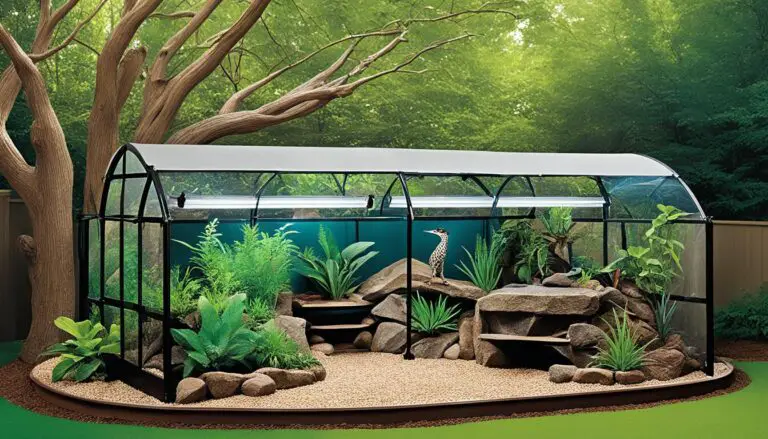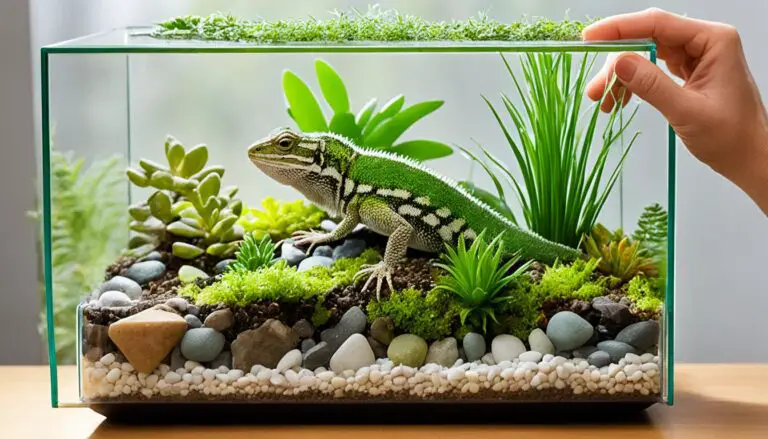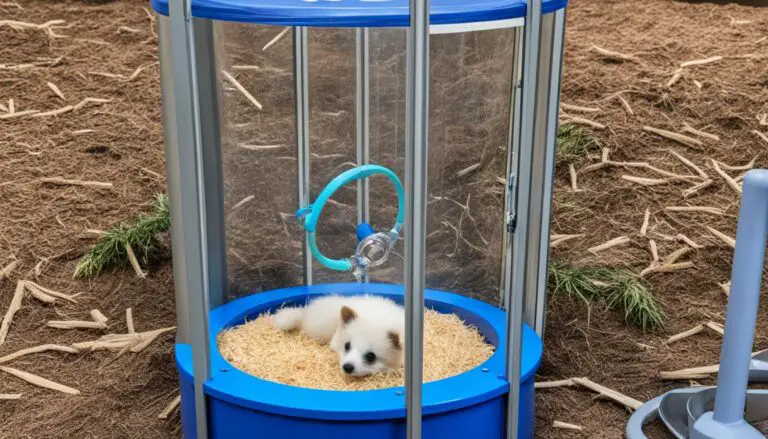Exotic Pet Housing Plans: Unique Designs
Looking to create a comfortable and suitable habitat for your exotic pet? Explore our guide on designing unique exotic pet housing plans and custom pet habitat designs. By considering your pet’s natural habitat, selecting the right enclosure, and providing the necessary lighting, temperature, and enrichment, you can create a safe and enriching environment for your exotic pet.
Key Takeaways:
- Research your exotic pet’s natural habitat to design a suitable enclosure.
- Select an enclosure that provides enough space and the right design for your pet’s needs.
- Ensure proper lighting and temperature within the enclosure.
- Use appropriate substrates and provide hiding places and enrichment.
- Regular cleaning and maintenance are essential for your pet’s well-being.
Designing a Pet-Friendly Living Space
Designing a living space that caters to the needs of your pets goes beyond traditional domesticated animals. Whether you have an exotic pet or a unique species, ensuring their comfort and well-being is essential. By incorporating innovative and creative ideas, you can create a pet-friendly environment that suits your beloved companions.
Creating a Dedicated Space
Start by designating a specific room or area in your home for your pets. This designated space will provide them with a sense of security and their own territory. Make sure to include their food and water bowls, as well as comfortable bedding for them to rest.
Play and Exploration
It’s important to incorporate elements that encourage play and exploration. Install cat trees, climbing structures, and scratching posts for cats, while ensuring there are designated areas for other pets to engage in their natural behaviors. You can also place cushions and cozy beds throughout the space for your pets to relax and enjoy their surroundings.
“Creating a pet-friendly space requires ingenuity and a deep understanding of your pet’s unique needs.”
Pet-Friendly Furniture
Investing in durable and pet-friendly furniture is crucial. Opt for materials that are easy to clean and can withstand scratches or accidents. This will prevent unnecessary damage to your furniture while providing your pets with comfortable lounging areas.
Non-Toxic Plants
Adding non-toxic plants to your pet-friendly living space can enhance the environment and contribute to its aesthetic appeal. However, make sure to research which plants are safe for your pets, as certain species can be harmful if ingested. Look for pet-friendly options such as spider plants or Boston ferns.

Outdoor Enclosures
If possible, consider creating an enclosed patio or outdoor area for your pets to enjoy fresh air and natural sunlight. This outdoor space should be secure and free from any potential hazards. Provide appropriate shelter and comfortable resting spots to ensure your pets are safe and content while enjoying the outdoors.
Designing a pet-friendly living space requires careful planning and consideration. By incorporating unique pet housing ideas and shelter designs for exotic pets, you can create an environment that not only meets their needs but also enhances their overall well-being.
Providing the Right Environment for Exotic Pets
Creating a suitable environment is essential for the well-being of exotic pets. To ensure their thriving, it is crucial to consider various factors such as temperature requirements, diet, and substrate selection.
Temperature Requirements: Exotic pets come from diverse climates around the world. Therefore, it is vital to replicate their natural habitat’s temperature conditions as closely as possible. Invest in specialized heat lamps and bulbs to maintain the appropriate temperature range for your pet’s well-being.
Diet: To help your exotic pet thrive, provide them with a specialized diet that includes essential vitamins, minerals, and proteins specific to their species. Consulting a veterinarian who specializes in exotic animals can help ensure your pet’s nutritional needs are met.
Substrate Selection: The choice of substrate plays a significant role in the overall comfort and health of your exotic pet. Research and select the right substrate that is suitable for your pet’s species, taking into consideration their natural habitat and specific needs.
Creating a personalized habitat that promotes the natural behavior and well-being of your exotic pet is crucial. By providing the right environment, you can help them lead a happy and healthy life.
| Types of Exotic Pet Sanctuaries | Benefits |
|---|---|
| 1. Custom-built enclosures | – Provides ample space for enrichment activities – Offers flexibility in design customization – Allows for better monitoring and care of your pet |
| 2. Innovative modular habitats | – Easy to assemble and disassemble – Can be expanded or modified as needed – Ideal for individuals who frequently move or relocate |
| 3. DIY enclosures | – Cost-effective option for pet enthusiasts – Ability to tailor the enclosure to your pet’s needs – Provides a sense of accomplishment in building a personalized habitat |
Importance of Husbandry for Exotic Pets
Husbandry, or creating the right environment for your exotic pet, is crucial for their well-being. Different exotic species have specific and unique needs. Temperature is critical and should mimic their natural habitat. Ensure a proper diet that includes the necessary nutrients. Choose the right substrate for your pet’s species. It’s important to properly research and understand the husbandry requirements for your specific exotic pet.
Exotic pets require specialized care to thrive in captivity. Designing an enclosure that replicates their natural habitat is essential. By providing **exotic pet habitat blueprints** and **creative pet enclosure architecture**, you can offer your pet a comfortable and stimulating environment.
Temperature
Temperature plays a vital role in the well-being of exotic pets. It’s crucial to maintain the appropriate temperature range that mimics their native habitat. Ensure that the enclosure has proper heating and cooling systems to maintain a stable and comfortable environment.
Diet
Feeding your exotic pet a well-balanced and species-specific diet is essential for their overall health. Research the nutritional requirements of your pet’s species and consult with a veterinarian to develop a suitable meal plan. Provide a variety of fresh foods and supplements to ensure they receive all the necessary nutrients.
Substrate
Choosing the right substrate for your exotic pet is important for their comfort and health. Different species have different substrate preferences, such as sand, soil, or bark. Research the natural habitat of your pet and replicate it as closely as possible to create a familiar and comfortable environment.
Proper husbandry is essential for the well-being of exotic pets. By creating a suitable environment that includes **exotic pet cage plans** and **innovative pet enclosure designs**, you can ensure their physical and psychological needs are met.
Regularly monitor the temperature, diet, and substrate conditions to ensure they remain optimal for your pet. Make adjustments as necessary to provide the best possible care. Seek guidance from experienced exotic pet owners, breeders, or veterinarians to learn more about the specific requirements of your pet’s species.

Creating a suitable environment for your exotic pet requires careful attention to detail. By incorporating **innovative pet enclosure designs**, you can provide a stimulating and enriching space for your pet to thrive. Remember to continually educate yourself about your pet’s specific needs and seek professional advice when needed.
Conclusion
Building a suitable pet habitat is crucial for the health and well-being of your exotic pet. By researching their natural habitat and taking into account their specific needs, you can create a comfortable and safe environment.
Expert-crafted pet housing plans offer unique pet housing concepts that cater to the requirements of different exotic pet species. These plans provide valuable guidance on selecting the right enclosure, ensuring proper lighting and temperature, choosing appropriate substrates, and offering enrichment for your pet’s mental and physical stimulation.
Regular maintenance, including cleaning and monitoring, is essential to maintain the optimal conditions within the habitat. Seeking professional advice from veterinarians specializing in exotic pets can provide invaluable insights and ensure that you are meeting all the necessary requirements for your pet’s welfare.
By investing the time and effort in designing and constructing a suitable habitat, you are providing your exotic pet with the best possible living conditions. Remember, a well-planned habitat not only promotes your pet’s health but also enhances their overall quality of life.
FAQ
What should I consider when creating a habitat for my exotic pet?
How can I design a pet-friendly living space for my exotic pet?
What are the specific requirements for creating the right environment for exotic pets?
Why is husbandry important for exotic pets?
How important is it to design and construct a suitable habitat for exotic pets?
Source Links
- https://vethotspot.com/2023/08/24/creating-an-ideal-habitat-for-your-exotic-pet/
- https://www.extraspace.com/blog/home-organization/barkitecture-ideas-for-a-pet-centric-home/
- https://www.tampavet.com/exotics-blog/husbandry/
Peter Stones is the founder of Exotic Pets Place, the leading online resource for exotic pet care information.
With over 10 years of hands-on exotic pet ownership experience, he is deeply passionate about sharing his expertise to help others properly care for their unusual pets.
When he's not writing extensively researched articles or connecting with fellow exotic pet enthusiasts worldwide, you can find Peter at home tending to his own beloved menagerie of exotic animals.

